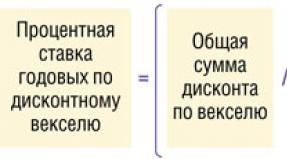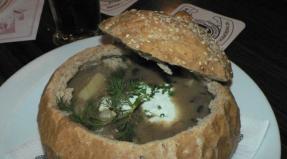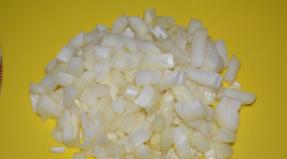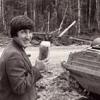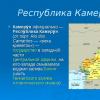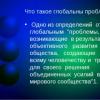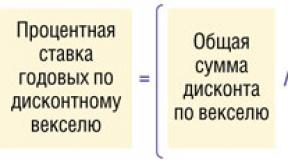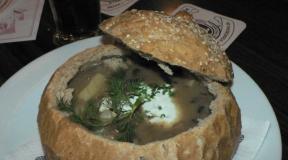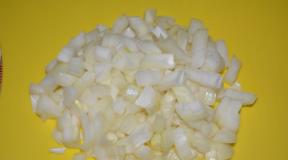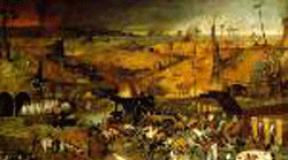Basic principles of the theory of the chemical structure of organic substances. Basic provisions of the theory of the chemical structure of organic substances by A. M. Butlerov. Oxidation reactions. Combustion
SUBJECT OF ORGANIC CHEMISTRY
The subject of the study of organic chemistry is hydrocarbons and their derivatives, which can contain almost all elements of the periodic table. As an independent science, organic chemistry took shape at the beginning of the 19th century, when many organic compounds were isolated from living nature, and formic acid, oxalic acid, and urea were also obtained synthetically. The separation of organic chemistry from inorganic chemistry is caused by the following reasons:
1. Organic compounds are very numerous. Currently, more than 9 million organic compounds have been isolated, while only about 700 thousand are known inorganic compounds.
2. They have such properties as low melting and boiling points, easy flammability and volatility, poor thermal and electrical conductivity.
3. Organic compounds have a more complex molecular structure compared to inorganic ones; they are associated with living nature and belong to more highly organized matter.
The main task of organic chemistry was previously the study of the properties of compounds isolated from the waste products of living organisms; now its main direction is the development of highly selective synthetic methods for obtaining substances with desired properties.
THEORIES OF CHEMICAL STRUCTURE
At the very beginning of the development of organic chemistry, theories appeared in which attempts were made to understand the structure of organic compounds.
Radical theory . Gay-Lussac and Berzelius showed in 1815 that in organic compounds there are stable groups of atoms, radicals, which can pass from one compound to another without change during reactions.
Theory of types. Laurent and Gerard in 1853 identified an analogy in the structure and some properties of organic and simple inorganic compounds. For example, alcohols were classified as a type of water, that is, they were considered as products of the replacement of hydrogen in water by the ROH radical, amines - as a type of ammonia, hydrocarbons - as a type of hydrogen.
In 1857, Kekule concluded that the carbon atom is tetravalent in organic compounds, and Cooper put forward the idea of the presence of carbon chains and proposed dashes to indicate chemical bonds. However, different formulas were assigned to the same substance, depending on the type of its reactions. Thus, 4 different formulas were assigned to acetone, 8 to acetic acid, etc.
Theory of chemical structure, which we now use, was developed by A.M. Butlerov, a professor at Kazan and then St. Petersburg universities.
BASIC PROVISIONS OF BUTLEROV’S THEORY:
1. Regulations on the chemical structure.
Molecules of organic compounds have a specific chemical structure, which is understood as the sequence of connections of atoms with each other in accordance with their valence. The chemical structure of a substance can be established by studying the reactions of its decomposition or synthesis under mild conditions and expressed by a structural formula, for example, for ethane:
or an abbreviated structural formula, where dashes are placed only between carbon atoms: CH 3 -CH 3.
When drawing up structural formulas, it is necessary to take into account the main features of the carbon atom:
a) carbon is usually tetravalent;
b) carbon atoms can connect with each other to form chains: open, unbranched,
open branched
c) cyclic

d) carbon can spend one, two, three valence units to combine with another atom, thereby forming a simple bond.
Chemical structure theory a theory that describes the structure of organic compounds, i.e. the sequence (order) of the arrangement of atoms and bonds in a molecule, the mutual influence of atoms, as well as the relationship of the structure with the physical and chemical properties of substances. For the first time, the main provisions of H. s. t. were expressed by A. M. Butlerov in the report “On the chemical structure of substances” (Congress of German naturalists, Speyer, 1861); he wrote: “Based on the idea that each chemical atom included in the composition of a body takes part in the formation of this latter and acts here with a certain amount of chemical force (affinity) belonging to it, I call chemical structure the distribution of the action of this force, as a result of which chemical atoms , indirectly or directly influencing each other, combine into a chemical particle” (Selected works on organic chemistry, 1951, pp. 71-72). Subsequently, these provisions were developed by him in a number of articles and the book “Introduction to the complete study of organic chemistry” (Kazan, 1864-66; German edition: Leipzig, 1867-1868) - the first manual on organic chemistry, in which all the material is systematized from the perspective of X . With. t. Creation of H. s. t. was preceded by the establishment of such important concepts as atom and molecule (1st International Congress of Chemists, Karlsruhe, 1860), as well as the postulation by F. A. Kekule and A. S. Cooper of the tetravalency of carbon (1857-58). Graphic formulas of organic compounds, close to the formulas arising from chemical theory. t., were proposed in 1858 by Cooper (see Organic chemistry). Basic provisions of H. s. t. are as follows: a) in organic molecules, atoms are connected to each other in a certain order according to their valence, which determines the chemical structure of the molecules; b) the chemical and physical properties of organic compounds depend both on the nature and number of their constituent atoms, and on the chemical structure of the molecules; c) for each empirical formula, a certain number of theoretically possible structures (isomers) can be derived; d) each organic compound has one chemical structure formula, which gives an idea of the properties of this compound; e) in molecules there is a mutual influence of atoms, both connected and not directly connected to each other. H. s. This made it possible to explain known cases of isomerism (position and skeleton) that remained incomprehensible to chemists of that time. Butlerov's (1863) prediction about the possibility of determining the spatial arrangement of atoms in a molecule was justified. In 1874, J. Van't Hoff and, independently of him, the French chemist J. Le Bel expressed the idea that the four valences of carbon have a clear spatial orientation and are directed towards the vertices of the tetrahedron, in the center of which there is a carbon atom. This thesis about a certain spatial orientation of chemical bonds formed the basis of a new branch of organic chemistry - stereochemistry (See Stereochemistry). It made it possible to explain a number of cases of geometric and mainly optical isomerism already known by that time, as well as a phenomenon that later received the name tautomerism (See Tautomerism) (Butlerov, 1862; German chemist K. Laar, 1885). Butlerov confirmed the correctness of his theory by synthesizing a number of organic compounds. H. s. t. had enormous predictive ability in the direction of the synthesis of organic compounds and establishing the structure of already known substances. Therefore, Butlerov’s theory contributed to the rapid development of chemical science, including synthetic organic chemistry, and the chemical industry. Further development of chemical engineering. t. enriched organic chemistry with new ideas, for example, about the cyclic structure of Benzene a (Kekule, 1865) and the oscillation (movement) of double bonds in its molecule (1872) (this idea played a very important role in the chemistry of aromatic and heterocyclic compounds), about the special properties compounds with conjugated bonds (theory of partial valences, F. K. I. Thiele, 1899), etc. The development of stereochemistry led to the creation of the tension theory (A. Bayer, 1885), which explains the different stability of cycles depending on their size, and subsequently - to conformational analysis (See Conformational analysis) (German chemists G. Sachse, 1890, and E. Mohr, 1918). Basic provisions of H. s. etc. were confirmed by studying organic compounds using chemical, physical and computational methods. Fundamental significance in H. s. i.e. have ideas about the mutual influence of atoms in the molecules of organic compounds. However, H. s. t. could not explain the nature of this influence, its internal mechanism. This became possible thanks to advances in physics, which made it possible to reveal the essence of the concepts of “valence” and “chemical bond”. Since the beginning of the 20th century. electronic concepts arise in organic chemistry (see Electronic theories in organic chemistry), which are based on electronic interpretations of the nature of ions (J. J. Thomson), ionic bonds (W. Kossel) and covalent bonds (German physicist I. Stark, G. . N. Lewis). Electronic concepts made it possible to explain the cause of the mutual influence of atoms (static and dynamic displacement of electron density in the molecule) and to predict the direction of reactions depending on the chemical structure of the reagents. Since the late 20s. 20th century the chemical bond began to be interpreted from the standpoint of quantum chemistry (See Quantum chemistry). Butlerov’s theory underlies the nomenclature and taxonomy of organic compounds (see Chemical nomenclature), and the use of his structural formulas helps both to determine the routes for the synthesis of new substances and to establish the structure of complex (including natural) compounds. Lit.: Butlerov A.M., Soch., vol. 1-3, M., 1953-1958; Markovnikov V.V., Izbr. works, M., 1955; Centenary of the theory of chemical structure. Sat. articles, M., 1961; Bykov G.V., History of the classical theory of chemical structure, M., 1960; his, History of electronic theories of organic chemistry, M., 1963; Zhdanov Yu. A., Theory of the structure of organic compounds, M., 1971; Reutov O. A., Theoretical foundations of organic chemistry, M., 1964; Tatevsky V.M., Classical theory of the structure of molecules and quantum mechanics, I., 1973.
Great Soviet Encyclopedia. - M.: Soviet Encyclopedia. 1969-1978 .
See what “Theory of Chemical Structure” is in other dictionaries:
Alexander Mikhailovich Butlerov Date of birth: September 3 (15), 1828 (18280915) Place of birth: Chistopol, Kazan province, Russian Empire Date of death: August 5 (17), 1886 ... Wikipedia
The theory describing the structures of organic. conn. Developed by A. M. Butlerov in 1861. Basic provisions of the theory: 1) atoms in molecules are connected to each other in a certain order in accordance with their valencies, which determines the chemical. building... ... Natural science. encyclopedic Dictionary
An outstanding discovery in chemical science made by the Russian scientist A. M. Butlerov. Source: Encyclopedia Russian Civilization ... Russian History
- ... Wikipedia
Resonance structures of benzene Resonance theory is the theory of the electronic structure of chemical compounds, according to which the distribution of electrons in molecules (including complex ions or radicals) is a combination (resonance) ... ... Wikipedia
- (in chemistry) a concept that complements the postulates of the classical theory of chemical structure and states that if for a given compound the classical theory (see Chemical structure theory) allows the construction of several acceptable... ...
Type I theory in chemistry, one of the leading chemical theories of the mid-19th century. In 1839 1840 J.B. Dumas proposed to consider chemical compounds as products of the replacement of some elements or radicals (see Radical theory) by others in a few... ... Great Soviet Encyclopedia
One of the leading chemical theories of the 1st half of the 19th century. It is based on the ideas of A.L. Lavoisier about the extremely important importance of oxygen in chemistry and about the dualistic (dual) composition of chemical compounds. In 1789... ... Great Soviet Encyclopedia
In chemistry, a concept that complements the postulates of the classical theory of chemical structure and states that if for a given compound the classical theory allows the construction of several acceptable structural formulas, then the actual state ... ... encyclopedic Dictionary
Type theory in chemistry, one of the leading chemical theories of the mid-19th century. In 1839 1840 J.B. Dumas proposed to consider chemical compounds as products of the replacement of some elements or radicals (see Radical theory) with others in a few “typical” ... ... Great Soviet Encyclopedia
Books
- Quantum theory of molecular systems. A Unified Approach, D. Cook, The book presents the first detailed modern analysis in world literature of conceptual issues in the theory of chemical structure from the point of view of a physicist. The presentation is carried out within the framework of... Category: Physical chemistry. Chemical physics Publisher: Intellect,
They required the resolution of the main question: whether they are a chaotic pile-up held by forces of attraction, or whether they represent particles with a certain structure, which can be established by studying the properties. Gerard, who was accepted with one or another reservation by the majority of chemists of that time, refused to study the chemical properties of the solution to the question of . Meanwhile, by this time facts and generalizations had already accumulated that could serve as the basis for resolving this issue. For example, she gave an extremely important generalization, which consisted in the fact that when some groups pass unchanged from the original ones to those formed when these . , for its part, contributed significantly to the study of the most variable parts and the causes of this variability.
The discovery of the elements was of extraordinary importance.
After Frankland's discovery, it became clear that they can be connected only in relationships determined by . In particular, it was found to be tetravalent (Kekule, Kolbe).
In 1858, Cooper published in three languages (English, French and German) an article “On the New Chemical Theory”, where he discards and expresses the point of view according to which all features can be explained if only two properties are taken into account: “selective affinity” ( connection) and “degree of affinity” ().
Cooper wrote: “From my point of view, these two properties are sufficient to explain everything that is characteristic of: this is what I will prove below ... In, consisting of three, four, five, etc. and an equivalent number, etc. , the latter can be replaced by other elements while forming an interconnected node. This means that one is connected to the other. This property gives, so to speak, a peculiar physiognomy and makes it possible to understand the hitherto incomprehensible fact of layering in organic compounds.”
Having thus arrived at an important idea about the carbon chain, Cooper further expresses his views in formulas, which, according to his plan, should give a picture of the structure of the compounds. As an example of his formulas, which were the first constitutional formulas, the following can be cited:

From these examples it is clear that Cooper was able to surprisingly correctly convey the constitution of these compounds, as well as some more complex ones that were little studied at that time (wine and).
However, all these formulas were devoid of experimental justification. Cooper did not raise the question at all about the possibility of their experimental verification. His formulas, as is easy to see, were based on a formal interpretation of concepts and connections, and partly even on intuition. Naturally, with this approach it is impossible to avoid mistakes. So, for example, the formulas for glycerol and given by Cooper are no longer correct:

Thus, Cooper’s views, developed by him in his talented, interesting work, do not have the character of a strict theory.
Another attempt to depict constitutional formulas was made in 1861 by Loschmidt. When constructing his formulas, Loschmidt considered the smallest material particles subject to the action of forces of attraction and repulsion. When approaching these forces, they are balanced, and the various forces are held near each other in a certain equilibrium position. Loschmidt conventionally designated the spheres of action of atomic forces (for example, and - simple, oxygen - double, nitrogen - triple).
Loschmidt's formulas had the following form:

Without attempting to form any idea of the mode of bonding of the six carbon V, Loschmidt denoted the symbol

Unlike Cooper, Loschmidt, when choosing formulas, was sometimes guided by chemical properties, in addition to (“pollency” in his words). However, in general, Loschmidt's method of deriving formulas was abstract and often simply unfounded. So, without relying on chemical data, Loschmidt tried to derive formulas such as, etc.
Naturally, these formulas turned out to be erroneous.
Despite the fact that many of the formulas proposed by Loschmidt turned out to be successful, his work remained almost unnoticed by chemists of that time and did not have any significant impact on the development of the theory.
A. M. Butlerov opposed the provision about the impossibility of chemical means; he showed that there is a certain sequence (chemical structure). Butlerov further proved that it can be established by studying the chemical properties, and, conversely, knowing the structure, many properties of the compound can be predicted. Butlerov not only substantiated this position with already existing factual material, but also predicted on its basis the possibility of the existence of new ones, which were subsequently discovered by him and other chemists.
The main idea of A. M. Butlerov’s theory was formulated by him in 1861 in the article “On the chemical structure of substances.” He wrote: “Based on the idea that each chemical that is part of the body takes part in the formation of this latter and acts here with a certain amount of chemical force (affinity) belonging to it, I call chemical structure the distribution of the action of this force, as a result of which chemicals, indirectly or directly influencing each other, they combine into a chemical particle.”
The basis of Butlerov's theory is the idea of the order of chemical interaction in. This order of chemical interaction does not include ideas about mechanism and physical arrangement. This important feature allows you to always rely on it when building a physical model.
Having established the concept of chemical structure, A. M. Butlerov gives a new definition of nature: “the chemical nature of a complex particle is determined by the nature of its elementary components, their quantity and chemical structure.”
Thus, A.M. Butlerov was the first to establish that each has a specific chemical structure, that the structure determines the properties, and that by studying chemical transformations, its structure can be established.
A. M. Butlerov’s views on the importance of chemicals follow from the basic principles of his theory. Butlerov believed that these formulas should not be “typical”, “reactionary”, but constitutional. In this sense, for everyone, only one rational formula is possible, on which one can judge chemical properties.
As for the method of writing, Butlerov rightly considered this issue to be of secondary importance: “Remembering that it is not a matter of form, but in essence, a concept, an idea, and taking into account that it is logically necessary to express the present particles with formulas denoting , that is, certain chemical relations that exist in it - it is not difficult to come to the conviction that any method of writing can be good, as long as it conveniently expresses these relations. It is quite natural to even use different methods, preferring the one that is more expressive for a given case. For example, C 2 H 6 can be depicted almost completely indifferently:
However, if the understanding is not sufficiently defined, a different way of writing can lead to confusion.”
This remarkable fact did not remain isolated for long; Many others were soon discovered, having the same composition but different properties. Since 1830, the discovered phenomenon began to be called (from the Greek - composed of identical parts), and with the same composition - atoms, which consists in the fact that two or more are not like something dead, motionless; we accept, on the contrary, that it is endowed with constant movement contained in its smallest particles, the particular mutual relations of which are subject to constant changes, summing up in some constant average result. We can have here and constant changes in the chemical particles that make up the mass in a short time ensured its universal recognition. However, at the same time, a tendency arose to silence the merits of A.M. Butlerov and to present only Kekule and Cooper as the creators of the theory of structure.
Already several years after the creation of the theory of structure, A. M. Butlerov had to speak out in defense of his priority, since some foreign chemists, who at first did not recognize or even understand his theory, subsequently tried to attribute the honor of creating the main provisions of this theory to themselves.
The decisive role of A. M. Butlerov in the creation was clearly emphasized in 1868 by the great Russian scientist D. I. Mendeleev, recommending A. M. Butlerov to St. Petersburg University. Mendeleev wrote that Butlerov “...again strives, by studying chemical transformations, to penetrate into the very depths of connections, dissimilar elements into one whole, gives each of them an innate ability to enter into a certain number of compounds, and attributes the difference in properties to different ways of connecting elements. No one pursued these thoughts as consistently as he did, although they were visible earlier... To carry out the same method of view through all classes, Butlerov published in 1864 the book: “Introduction to the complete study of organic chemistry,” last year translated into German language Butlerov, through readings and fascination with ideas, formed around himself in Kazan a school of chemists working in his direction. The names of Markovnikov, Myasnikov, Popov, two Zaitsevs, Morgunov and some others managed to become famous for many discoveries made mainly due to the independence of the Butleroz movement. I can personally testify that scientists such as Wurtz and Kolbe consider Butlerov to be one of the most influential drivers of the theoretical direction of chemistry in our time.”
A. M. Butlerov rightly believed that it would develop as new factual material accumulated. He wrote: “...I cannot help but notice that the conclusions to which the principle of chemical structure leads turn out to be in thousands of cases consistent with the facts. As in any theory, and here, of course, there are shortcomings and imperfections, there are facts that do not strictly correspond to the concept of chemical structure. Of course, one should especially desire the proliferation of such facts; facts that are not explained by existing theories are the most valuable for science; their development should be primarily expected to develop in the near future”).
The largest event in the development of organic chemistry was the creation in 1961 by the great Russian scientist A.M. Butlerov’s theory of the chemical structure of organic compounds.
Before A.M. Butlerov considered it impossible to know the structure of a molecule, that is, the order of chemical bonds between atoms. Many scientists even denied the reality of atoms and molecules.
A.M. Butlerov denied this opinion. He proceeded from the correct materialistic and philosophical ideas about the reality of the existence of atoms and molecules, about the possibility of knowing the chemical bond of atoms in a molecule. He showed that the structure of a molecule can be established experimentally by studying the chemical transformations of a substance. Conversely, knowing the structure of the molecule, one can deduce the chemical properties of the compound.
The theory of chemical structure explains the diversity of organic compounds. It is due to the ability of tetravalent carbon to form carbon chains and rings, combine with atoms of other elements and the presence of isomerism in the chemical structure of organic compounds. This theory laid the scientific foundations of organic chemistry and explained its most important laws. The basic principles of his theory A.M. Butlerov outlined it in his report “On the Theory of Chemical Structure”.
The main principles of the theory of structure are as follows:
1) in molecules, atoms are connected to each other in a certain sequence in accordance with their valency. The order in which the atoms bond is called chemical structure;
2) the properties of a substance depend not only on which atoms and in what quantity are included in its molecule, but also on the order in which they are connected to each other, i.e., on the chemical structure of the molecule;
3) atoms or groups of atoms that form a molecule mutually influence each other.
In the theory of chemical structure, much attention is paid to the mutual influence of atoms and groups of atoms in a molecule.
Chemical formulas that depict the order of connection of atoms in molecules are called structural formulas or structure formulas.
The importance of the theory of chemical structure of A.M. Butlerova:
1) is the most important part of the theoretical foundation of organic chemistry;
2) in importance it can be compared with the Periodic Table of Elements by D.I. Mendeleev;
3) it made it possible to systematize a huge amount of practical material;
4) made it possible to predict in advance the existence of new substances, as well as indicate ways to obtain them.
The theory of chemical structure serves as the guiding basis for all research in organic chemistry.
5. Isomerism. Electronic structure of atoms of elements of short periods. Chemical bond
The properties of organic substances depend not only on their composition, but also on the order of connection of atoms in the molecule.
Isomers are substances that have the same composition and the same molar mass, but different molecular structures, and therefore have different properties.
Scientific significance of the theory of chemical structure:
1) deepens understanding of matter;
2) indicates the path to knowledge of the internal structure of molecules;
3) makes it possible to understand the facts accumulated in chemistry; predict the existence of new substances and find ways to synthesize them.
With all this, the theory greatly contributed to the further development of organic chemistry and the chemical industry.
The German scientist A. Kekule expressed the idea of connecting carbon atoms with each other in a chain.
The doctrine of the electronic structure of atoms.
Features of the doctrine of the electronic structure of atoms: 1) made it possible to understand the nature of the chemical bond of atoms; 2) find out the essence of the mutual influence of atoms.
State of electrons in atoms and structure of electron shells.
Electron clouds are areas of greatest probability of electron presence, which differ in their shape, size, and direction in space.
In an atom hydrogen A single electron, when moving, forms a negatively charged cloud of spherical (spherical) shape.
S electrons are electrons that form a spherical cloud.
A hydrogen atom has one s electron.
In an atom helium– two s-electrons.
Features of the helium atom: 1) clouds of the same spherical shape; 2) the highest density is equally distant from the core; 3) electron clouds are combined; 4) form a common two-electron cloud.
Features of the lithium atom: 1) has two electronic layers; 2) has a spherical cloud, but is significantly larger in size than the internal two-electron cloud; 3) the electron of the second layer is weaker attracted to the nucleus than the first two; 4) is easily captured by other atoms in redox reactions; 5) has an s-electron.
Features of the beryllium atom: 1) the fourth electron is the s-electron; 2) the spherical cloud is combined with the cloud of the third electron; 3) there are two paired s-electrons in the inner layer and two paired s-electrons in the outer layer.
The more electron clouds overlap when atoms join together, the more energy is released and the stronger the chemical bond.
CHEMISTRY WORK
THEORY OF KHIMIC STRUCTURE
ORGANIC
CONNECTIONS A.M. BUTLEROVA
COMPLETED:
Lebedev Evgeniy
PLAN:
1. DEVELOPMENT OF INDUSTRY RELATED TO THE PRODUCTION OF ORGANIC SUBSTANCES IN THE FIRST HALF OF THE XIX century CENTURIES .CONNECTION OF SCIENCE AND PRACTICE.
2. STATE OF ORGANIC CHEMISTRY IN THE MIDDLE OF XIX CENTURIES.
3. BACKGROUND OF THE THEORY OF CHEMICAL STRUCTURE.
4. VIEWS OF A.M. THE STRUCTURE OF THE SUBSTANCE IS BOTTLED.
5. BASIC PROVISIONS OF THE THEORY.
6. THE IMPORTANCE OF THE THEORY OF CHEMICAL STRUCTURE AND THE DIRECTIONS OF ITS DEVELOPMENT.
Man has been familiar with organic substances since ancient times. . Our distant ancestors used natural dyes to dye fabrics, used vegetable oils, animal fats, cane sugar as food products, and obtained vinegar by fermenting alcoholic liquids...
But the science of carbon compounds arose only in the first half of the twentieth century. I X century.
In 1828, a student of J. Berzelius, the German scientist F. Wöhler, synthesized an organic substance - urea - from inorganic substances. In 1845, the German chemist A. Kolbe produced acetic acid artificially. In 1854, the French chemist M. Berthelot synthesizes fats. Russian scientist A.M. Butlerov in 1861 was the first to synthesize a sugary substance.
It is known that developing industry and practice pose new challenges for science. As soon as society has a technical need, it promotes
more than a dozen universities are advancing science.
To confirm these words, the following example can be given. The textile industry in the 40s of the nineteenth century could no longer
provide natural dyes - there were not enough of them. Science was faced with the task of producing dyes synthetically. A search began, as a result of which various aniline dyes and alizarin, previously extracted from the roots of the madder plant, were synthesized. The resulting dyes, in turn, contributed to the rapid growth of the textile industry.
Currently, many organic substances have been synthesized, not only those found in nature, but also not found in it, for example, numerous plastics, various types of rubbers, all kinds of dyes, explosives, and medicines.
There are now more synthetically produced substances known than those found in nature, and their number is rapidly growing. Syntheses of the most complex organic substances - proteins - begin to take place. .
2. State of organic chemistry in the middle of X I X century.
Meanwhile, there were pre-structural theories - the theory of radicals and the theory of types.
The theory of radicals (its creators J. Dumas, I. Berzelius) argued that the composition of organic substances stv includes radicals that pass from one molecule to another: radicals are constant in composition and can exist in free form. It was later found that radicals can undergo changes as a result of a substitution reaction (replacement of hydrogen atoms with chlorine atoms). Thus, trichloroacetic acid was obtained. The theory of radicals was gradually rejected, but it left a deep mark on science: the concept of a radical became firmly established in chemistry. The statements about the possibility of the existence of radicals in free form, about the transition of certain groups from one compound to another in a huge number of reactions, turned out to be true.
Most common in the 40s. In the 19th century there was a theory of types. According to this theory, all organic substances were considered derivatives of the simplest inorganic substances - such as hydrogen, hydrogen chloride, water, ammonia, etc. For example, the type of hydrogen
According to this theory, formulas do not express the internal structure of molecules, but only the methods of formation and reaction of a substance. The creator of this theory, C. Gerard and his followers believed that the structure of matter cannot be known, since the molecules change during the reaction. For each substance, you can write as many formulas as there are different types of transformations the substance can undergo.
The theory of types was progressive at one time, since it made it possible to classify organic substances, predict and discover a number of simple substances, if they could be classified according to their composition and some properties to a certain type. However, not all synthesized substances fit into one type of compound or another. The theory of types focused its main attention on the study of chemical transformations of organic compounds, which was important for understanding the properties of substances. Subsequently, the theory of types became a brake on the development of organic chemistry, since it was not able to explain the facts accumulated in science, to indicate ways of synthesizing new substances necessary for technology, medicine, a number of industries, etc. A new theory was needed that could not only explain facts and observations, but also make predictions and indicate ways of synthesizing new substances.
There were many facts that required explanation -
- valency question
- isomerism
- writing formulas.
Prerequisites for the theory of chemical structure.
By the time the theory of chemical structure appeared, A.M. Butlerov, much was already known about the valence of elements : E. Frankland established the valency for a number of metals; for organic compounds, A. Kekule proposed the tetravalency of the carbon atom (1858), and it was suggested that there was a carbon-carbon bond, and the possibility of connecting carbon atoms in a chain (1859, A.S. Cooper, A. Kekule). This idea played a major role in the development of organic chemistry.
An important event in chemistry was the International Congress of Chemists (1860, Karlsruhe), where the concepts of atom, molecule, atomic weight, and molecular weight were clearly defined. Before this, there were no generally accepted criteria for defining these concepts, so there was confusion in writing the formulas of substances. A.M. Butlerov considered the most significant success of chemistry for the period from 1840 to 1880. the establishment of the concepts of atom and molecule, which gave impetus to the development of the doctrine of valency and made it possible to move on to the creation of a theory of chemical structure.
Thus, the theory of chemical structure did not arise out of nowhere. The objective prerequisites for its appearance were : A). Introduction to chemistry of the concepts of valence and especially , about the tetravalency of the carbon atom, b). Introduction of the concept of carbon-carbon bond. V). Developing the right idea about atoms and molecules.
Views of A.M. Butlerov on the structure of matter.
In 1861, A.M. delivered a report. Butlerov on XXXY I Congress of German doctors and naturalists in Speyer. Meanwhile, his first presentation on theoretical issues of organic chemistry took place in 1858, in Paris at the Chemical Society. In his speech, as well as in the article about A.S. Cooper (1859) A.M. Butlerov points out that valency (chemical affinity) should play a role in creating a theory of chemical structure. Here he first used the term “structure”, expressed the idea of the possibility of knowing the structure of matter, and the use of experimental research for these purposes.
The basic ideas about chemical structure were presented by A.M. Butlerov in 1861 in his report “On the chemical structure of substances.” It noted the lag between theory and practice and pointed out that the theory of types, despite some of its positive aspects, has major shortcomings. The report gives a clear definition of the concept of chemical structure, and discusses ways to establish the chemical structure (methods of synthesizing substances, using various reactions).
A.M. Butlerov argued that each substance corresponds to one chemical formula : it characterizes all the chemical properties of a substance and actually reflects the order of chemical bonds of atoms in molecules. In subsequent years, A.M. Butlerov and his students carried out a number of experimental works to verify the correctness of predictions made on the basis of the theory of chemical structure. Thus, isobutane, isobutylene, pentane isomers, a number of alcohols, etc. were synthesized. In terms of significance for science, these works can be compared with the discovery predicted by D.I. Mendnleyev elements (ekabor, ekasilicon, ekaaluminium).
In full, the theoretical views of A.M. Butlerov were reflected in his textbook “Introduction to the complete study of organic chemistry” (the first edition was published in 1864-1866), built on the basis of the theory of chemical structure. He believed that molecules are not a chaotic accumulation of atoms, that the atoms in molecules are connected to each other in a certain sequence and are in constant motion and mutual influence. By studying the chemical properties of a substance, it is possible to establish the sequence of connections of atoms in molecules and express it with a formula.
A.M. Butlerov believed that with the help of chemical methods of analysis and synthesis of a substance, it is possible to establish the chemical structure of a compound and, conversely, knowing the chemical structure of a substance, one can predict its chemical properties.
The main provisions of the theory of A.M. Butlerov .
Based on the above statements by A.M. Butlerov, the essence of the theory of chemical structure can be expressed in the following provisions :
Atoms in molecules are not arranged randomly, they are connected to each other in a certain sequence according to their valence
A) the sequence of connection of atoms in a molecule
B) carbon is tetravalent
B) structural formulas (full)
Sequence of connection of atoms in a molecule
D) abbreviated formulas
D) types of circuits
Isomerism explains the diversity of organic substances. Different substances, as the theory of chemical structure teaches, correspond to different orders of interconnection of atoms with the same qualitative and quantitative composition of the molecule. If this theory is correct, there should be two butanes, differing in their structure and properties. Since only one butane was known at that time, A.M. Butlerov attempted to synthesize butane of a different structure. The substance he obtained had the same composition , but other properties, in particular a lower boiling point. IN Unlike butane, the new substance was called “isobutane” (Greek “izos” - equal).
Read also...
- Presentation on the topic "African countries" Presentation on the topic any African country
- Interconnection of global problems
- Analysis of the motivation management system in a travel agency Methods of managing staff motivation at tourism enterprises
- Analysis of the ratio of income, expenses and financial results Ratio of profit and expenses
